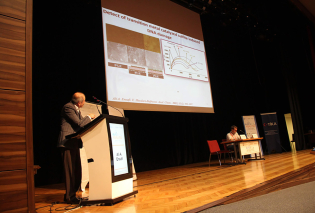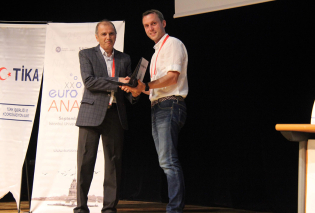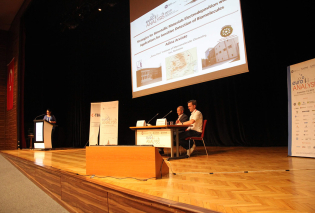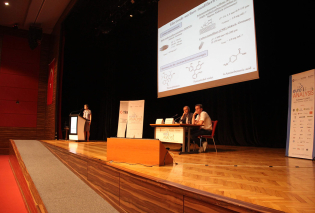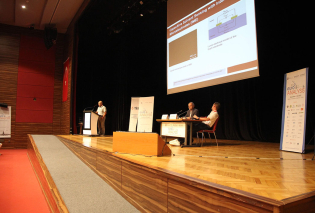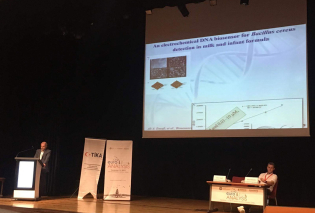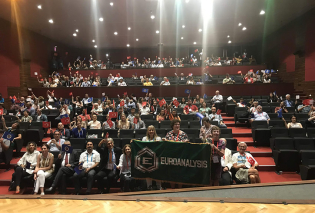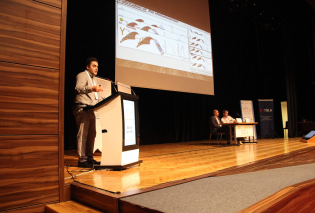Challenge with the recent application of nanomaterials in bioelectrochemistry and electrochemical biosensing
Ali A. Ensafi, Professor, Department of Chemistry, Isfahan University of Technology, Isfahan, Iran; E-mail: ensafi@cc.iut.ac.ir, aaensafi@gmail.com
Nanoscale carbon and non-carbon materials exhibit diverse outstanding properties, rendering them extremely suitable for the fabrication of electrochemical biosensors. Over the past two decades, advances in this area have continuously emerged. These nanomaterials, endowed with different natures, figures, sizes, and compositions, have been applied to serve broad functions in the manufacture of bioelectrochemistry and electrochemical biosensors. One of the important problems in the construction of all biosensors is to provide an appropriate biosensing surface for perfect immobilization of the bio-recognition element on it, although the biosensing interface must have all the characteristics required to provide a suitable signal from the transducer. The biosensing surface should be such that the analyte interacts selectively with the bio-recognition element, which in turn increases the selectivity of the biosensor [1,2].
The more fundamental challenge in the fabrication of biosensors is to provide conditions that can be used from biosensors in complex biological samples and even in confined environments such as inside cells for in vivo research [3-4]. Furthermore, multiplexing biosensing systems, which make this possible to test several analytes simultaneously on one device is an important challenge that researchers are facing [5]. However, many biosensors described in the recent literature still display a few drawbacks compared to other analytical methods. The most difficult problems to overcome for biosensors with biomedical applications are: the reduced stability, the electrochemical interferences, the lack of or low response reproducibility, and tend to rapidly lose their activity and thus limit the lifetime of the sensor. As yet, several researchers have used different types of nanomaterials to solve these challenges. Examples of such materials include metal nanoparticles [6], metal and nonmetal oxide nanoparticles [7], polymeric nanoparticles [8], and different other nanomaterials [9-10]. Therefore, novel biosensors based on nanomaterials have received significant attention, and much of the electrochemical sensing and biosensing research is devoted to the synthesis and modification of new nanomaterials. In this presentation, we attempt to survey the recent developments of electrochemical biosensors based on different types of carbon nanomaterials and non-carbon materials. In addition, remaining challenges and perspectives for future developments are also briefly discussed.
References
[1] Ensafi, A.A., Amini, M., Rezaei, B., Biosens. Bioelectron. 53 (2014) 43.
[2] Ensafi, A.A., Amini, M., Rezaei, B., Biosens. Bioelectron. 59 (2014) 282.
[3] Baranwal, A., Chandra, P., Biosens. Bioelectronics 121 (2018) 137.
[4] Wu, Q., Wei, X., Pan, Y., Zou, Y., Hu, N., Wang, P., Biomed.l Microdev. 20 (2018) 82.
[5] Ensafi, A.A., Heydari-Bafrooei, E., Rezaei B., Biosens. Bioelectron. 41 (2013) 627.
[6] Ensafi, A.A., Amini, M., Rezaei, B., Talebi, M., Biosens. Bioelectron. 77 (2016) 409.
[7] Picca, R.A., Manoli, K., Luciano, A., Sportelli, M.C., Palazzo, G., Torsi, L., Cioffi, N., Sens. Actuators B 274 (2018) 210.
[8] Melnychuk, N., Klymchenko, A.S., J. Amer. Chem. Soc. 140 (2018) 10856.
[9] Ensafi, A.A., Heydari-Bafrooei, E., Rezaei, B., Anal. Chem. 85 (2013) 991.
[10] Ensafi, A.A., Jamei, H.R., Heydari-Bafrooei, E., Rezaei, B., Bioelectrochemistry 111 (2016) 15.
